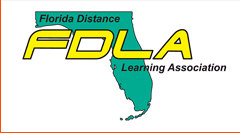Improving the Learning Process in the Higher Education through the Use of a Predictive Tool (Dashboard)
Start
1-30-2019 1:45 PM
End
1-30-2019 2:30 PM
Short Description
The study is the initial step in providing a clear understanding of the use of a predictive tool (dashboard) to improving the learning process in the higher education field. Through further applications and research, the predictive tool must be refined to increase accuracy, and provide expeditious, reliable feedback about the students’ progress in an online environment.
Abstract
The purpose of this study was the initial step in providing a clear understanding of the use of a predictive tool (dashboard) to improving the learning process in the higher education field. Through further applications and research, the predictive tool must be refined to increase accuracy, and provide expeditious, reliable feedback about the students’ progress in an online environment. This information will benefit e-learning facilitators in the following ways: 1) knowing their students and, therefore, identifying how best to deliver content to them; 2) applying the right predictive tool to capitalizing on the new experience and new opportunity; 3) taking value-added approaches to student engagement; 4) bridging connections in a precise manner between enriched content and e-learning; and 5) transforming e-learning into digital experience.
Format
Snapshot Presentation
Institutional level targeted
Higher Ed
Improving the Learning Process in the Higher Education through the Use of a Predictive Tool (Dashboard)
The purpose of this study was the initial step in providing a clear understanding of the use of a predictive tool (dashboard) to improving the learning process in the higher education field. Through further applications and research, the predictive tool must be refined to increase accuracy, and provide expeditious, reliable feedback about the students’ progress in an online environment. This information will benefit e-learning facilitators in the following ways: 1) knowing their students and, therefore, identifying how best to deliver content to them; 2) applying the right predictive tool to capitalizing on the new experience and new opportunity; 3) taking value-added approaches to student engagement; 4) bridging connections in a precise manner between enriched content and e-learning; and 5) transforming e-learning into digital experience.

